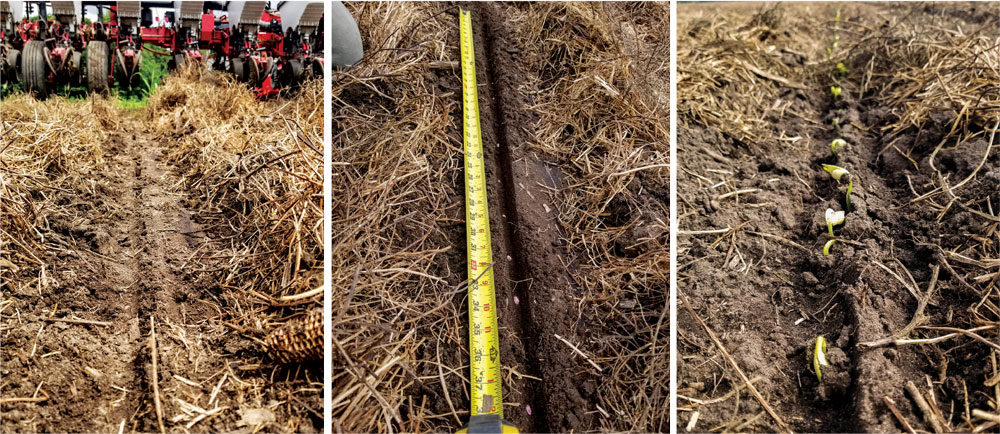No-Till Farmer
Get full access NOW to the most comprehensive, powerful and easy-to-use online resource for no-tillage practices. Just one good idea will pay for your subscription hundreds of times over.

Jay Baxter, a fourth-generation farmer in Delaware, says a couple of well-timed torrential rains became ‘ah hah! moments’ that ultimately led him to switch all of his cash crop production to no-till with the use of cover crops.
Baxter Farms is a 2,000+-acre irrigated operation near Georgetown which produces corn, soybeans, wheat, sweet corn, black eyed peas, fresh-market edamame and baby lima beans. The farm, which also produces 200,000 broilers per year, sits in an area historically home to commercial canneries and widespread vegetable production.
“Our family had been converting the farm to no-till, and had been using cover crops for some time as a way of managing the use of municipal wastewater through our irrigation systems on agronomic crops,” he says, adding that they don’t use wastewater on commercial vegetables.
“When we use the community wastewater, however, we’re required to apply it to a growing crop in the field. That’s how we developed experience with cover crops a number of years ago.”
Most commercial vegetable crop contracts specify farm management methods to be used, and when Baxter and his wife bought their first farm in 2013 and decided to grow baby lima beans, that was the case. Conventional farming methods of ‘clean till’ fields were required.
“Literally two days after we planted our first crop of baby lima beans, we got a 5-inch downpour that washed seed and much topsoil of the clean-tilled field into nearby ditches, into the woods and on out to the bay,” Baxter explains. “That…